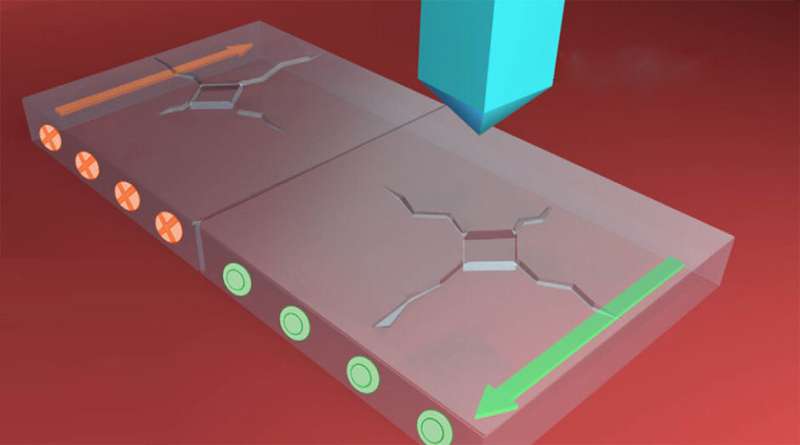Crack propagation is asymmetric in polar materials

The ICN2 Oxide Nanophysics Group, led by ICREA Prof. Gustau Catalán, has published in Physical Review Letters how, due to flexoelectricity, cracks in ferroelectrics (switchable polar materials) propagate more easily in the polar direction than in the opposite.
Fracture physics is a central field of study in materials science. In the case of piezoelectric materials, due to their ability to generate strains if subjected to a voltage and vice versa, microcracks are routine and shorten the lifespan of the devices in which they are used. Researchers therefore look for ways in which fractures can be prevented, although sometimes they can also be used to our advantage. For instance, controlled cracking has been proposed as a mechanism for device nanopatterning.
Fracture fronts concentrate the maximum deformation that a solid can withstand, so flexoelectricity (polarization induced by deformation gradients) plays a key role. A recent study published in Physical Review Letters shows that crack-generated flexoelectricity acts to facilitate or hamper crack propagation, depending on the polarization axis of the material.
This study has a several important implications. It is the first to experimentally demonstrate that crystal fracture is not symmetric: cracks travelling in the polar direction are measurably longer than those traveling against. Second, since the polarity of a ferroelectric can be switched by voltage, voltage can serve as a tool to manage the propagation of cracks in polar materials, either to mitigate fatigue (the weakening and subsequent breakage of the material), or to promote fracture-based patterning schemes.
More information: Kumara Cordero-Edwards et al. Flexoelectric Fracture-Ratchet Effect in Ferroelectrics, Physical Review Letters (2019). DOI: 10.1103/PhysRevLett.122.135502
Journal information: Physical Review Letters


















